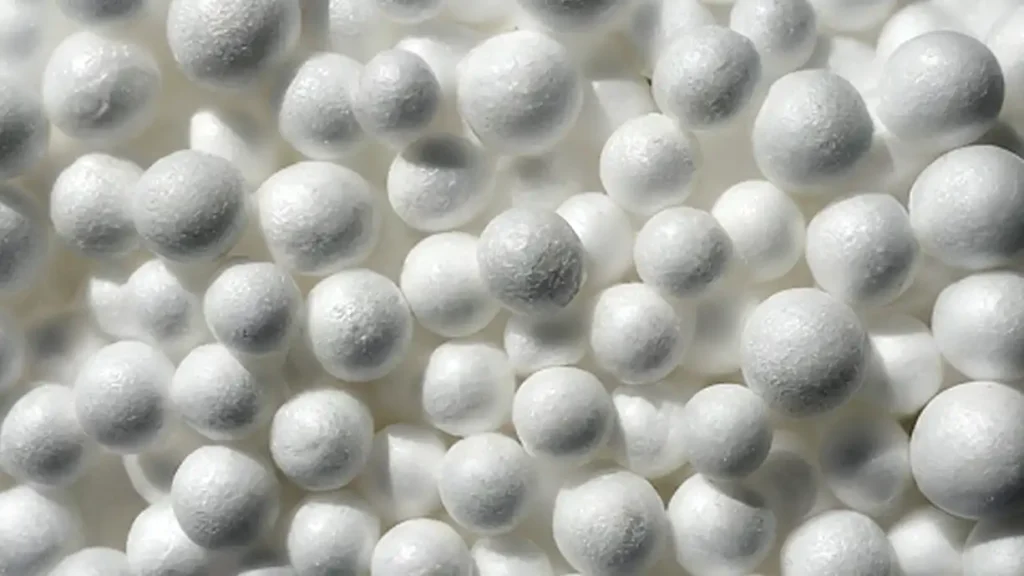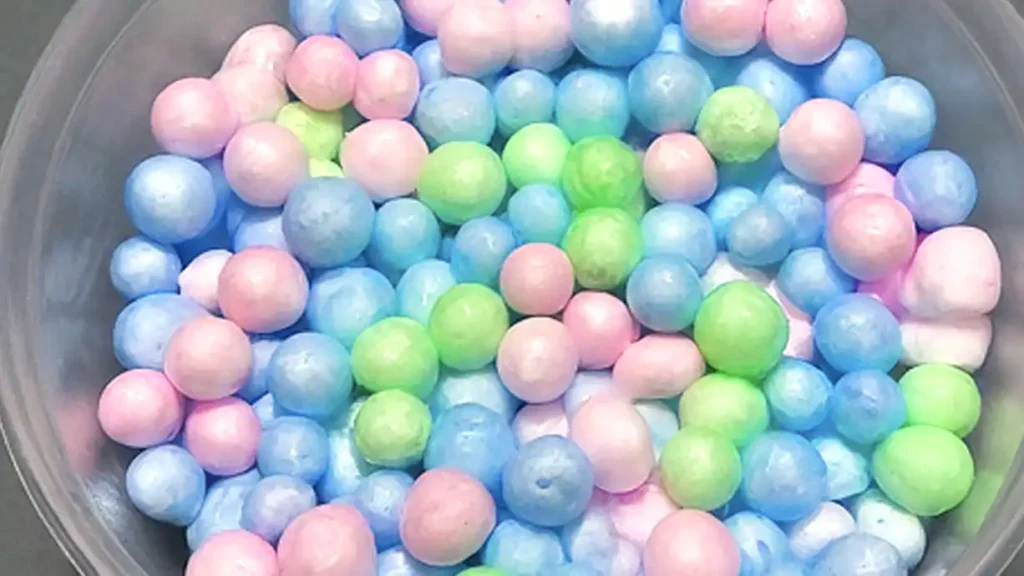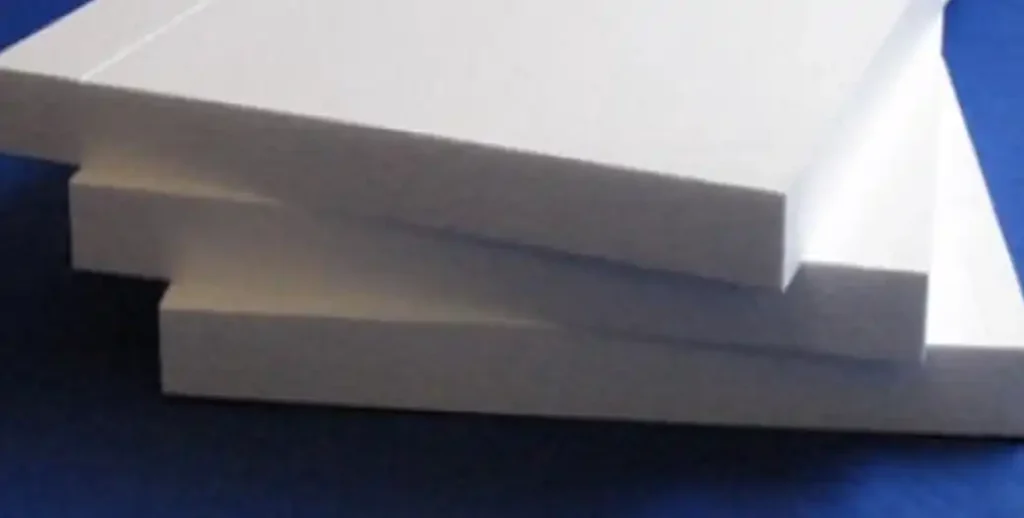In today’s environmentally conscious world, the demand for sustainable packaging solutions is higher than ever. As businesses strive to reduce their carbon footprint and meet consumer expectations, EPS (Expanded Polystyrene) material emerges as a versatile option.
This article delves deep into the world of EPS material, exploring its properties, applications, environmental impact, and more.
What Is EPS Material?
EPS material meaning:
EPS material, also known as Styrofoam, is a lightweight and rigid plastic material derived from polystyrene.
The full form of EPS material is Expanded Polystyrene. Its cellular structure consists of numerous tiny air pockets, giving it excellent insulation properties. This versatile material finds applications across various industries due to its durability, affordability, and recyclability.
What is EPS Building Material
EPS, or Expanded Polystyrene, is a lightweight and versatile building material commonly used in construction. It is a type of rigid foam insulation made from polystyrene beads that are expanded and molded into various shapes and sizes. EPS building material is known for its excellent thermal insulation properties, durability, and ease of installation.
In construction, EPS is primarily used for:
- Insulation: EPS panels are installed in walls, roofs, and floors to provide thermal insulation, reducing heat transfer and energy consumption.
- Structural Support: High-density EPS blocks are used as lightweight fill material in construction projects, providing structural support while minimizing load on the building foundation.
- Void Fill: EPS is used as void fill material in concrete slabs and road construction to reduce weight and improve insulation properties.
- Foundation Systems: EPS geofoam is utilized in foundation systems to reduce soil settlement and improve stability.
Overall, EPS building material offers a cost-effective and sustainable solution for various construction applications, contributing to energy efficiency and environmental sustainability in the built environment.
What Are EPS Raw Materials

Expanded Polystyrene (EPS) is a lightweight, rigid, and versatile plastic foam material widely used in packaging, insulation, and construction.
The raw materials used in the production of EPS include:
- Polystyrene Resin: The primary component of EPS foam, polystyrene resin is derived from petroleum and serves as the base material for manufacturing EPS beads.
- Blowing Agent: Typically pentane or a mixture of hydrocarbons, the blowing agent is added to the polystyrene resin to expand the beads and create the cellular structure of EPS foam during the molding process.
- Graphite: Graphite is sometimes added as an additive to EPS formulations to enhance thermal insulation properties, making the EPS foam more effective in reducing heat transfer.
- Flame Retardants: These are chemicals added to EPS formulations to improve fire resistance and meet safety regulations. Common flame retardants used include hexabromocyclododecane (HBCD) and other halogenated compounds.
- Colorants: EPS foam can be tinted to various colors for aesthetic purposes or to differentiate between different products. Colorants are added to the raw materials during the manufacturing process.
- Nucleating Agents: Nucleating agents control the cell size and structure of EPS foam, influencing its mechanical properties and performance characteristics.
- Antistatic Agents: To reduce static electricity buildup, antistatic agents may be incorporated into EPS formulations, particularly in applications where static discharge could pose a risk.
- Stabilizers: Stabilizers are additives used to enhance the durability and resistance to degradation of EPS foam, ensuring its longevity and performance over time.
- Lubricants: Lubricants are added to the raw materials to aid in the processing of EPS foam during manufacturing, facilitating the molding and shaping processes.
- Fillers: Fillers such as talc or calcium carbonate may be included in EPS formulations to modify specific properties such as stiffness, impact resistance, or cost-effectiveness.
EPS raw materials used in the production of EPS include polystyrene resin, blowing agents, additives such as graphite, flame retardants, colorants, nucleating agents, antistatic agents, stabilizers, lubricants, and fillers.
EPS Material Properties

EPS (Expanded Polystyrene) material boasts a range of properties, making it a popular choice for various applications, particularly in packaging and insulation.
Let’s delve into some of its key EPS foam material properties:
Lightweight: One of the most notable characteristics of EPS material is its lightweight nature. Despite its lightness, it offers significant strength and durability, making it ideal for packaging applications where weight reduction is essential.
Thermal Insulation: EPS material exhibits excellent thermal insulation properties, thanks to its cellular structure composed of tiny air pockets. This insulation capability makes it suitable for use in packaging perishable goods, as well as in construction for insulating walls, roofs, and floors.
Moisture Resistance: EPS material is inherently resistant to moisture, making it an excellent choice for packaging items that may be susceptible to damage from moisture exposure. Its moisture resistance also contributes to its longevity and durability, ensuring the integrity of packaged products during transit and storage.
Chemical Resistance: EPS material is resistant to a wide range of chemicals, including acids and bases, which adds to its versatility and suitability for various industrial applications. This chemical resistance ensures that packaged goods remain protected from potential damage caused by exposure to corrosive substances.
Cushioning Properties: EPS material is renowned for its exceptional cushioning properties, making it an ideal choice for protecting fragile items during transportation and handling. Its ability to absorb shocks and vibrations helps prevent damage to delicate products, reducing the risk of breakage or deformation.
Versatility: Another significant advantage of EPS material is its versatility. It can be easily molded and shaped into various forms, allowing for customized packaging solutions tailored to specific product requirements. Additionally, EPS material can be coated or laminated for added protection or aesthetic appeal, further enhancing its versatility.
Recyclability: EPS material is fully recyclable, contributing to its sustainability credentials. Through recycling processes, used EPS can be transformed into new products or raw materials, reducing waste and conserving valuable resources. This recyclability factor is increasingly important in today’s environmentally conscious landscape.
Applications of EPS Material

EPS (Expanded Polystyrene) material finds diverse applications across multiple industries, owing to its unique properties and versatility. Let’s explore some of the primary applications of EPS material:
Packaging:
- Shipping Containers: EPS material is widely used in the production of shipping containers due to its lightweight yet durable nature. These containers provide excellent protection for goods during transit, reducing the risk of damage.
- Protective Packaging: In industries such as electronics, appliances, and pharmaceuticals, EPS is utilized for protective packaging to safeguard delicate items from impact and vibration. Its cushioning properties help prevent breakage and ensure product integrity.
- Food Packaging: EPS is a common choice for food packaging containers and trays due to its insulation capabilities. It helps maintain the temperature of hot or cold food items during transport and storage, ensuring freshness and quality.
Construction:
- Insulation: EPS material is widely used as insulation in the construction industry for its excellent thermal properties. It is employed in walls, roofs, and floors to enhance energy efficiency and provide comfort indoors.
- Void Fillers: In concrete construction, EPS serves as lightweight void fillers, reducing the weight of structures without compromising strength. These void fillers improve construction efficiency and minimize material usage.
- Architectural Elements: EPS can be molded into various architectural elements, such as decorative moldings, columns, and facades. Its lightweight nature makes it easy to install and enhances design flexibility.
Consumer Products:
- Disposable Cups and Food Containers: EPS material is commonly used for disposable cups, plates, and food containers in the foodservice industry. Its affordability, lightweight, and insulating properties make it suitable for single-use applications.
- Insulated Coolers and Beverage Containers: EPS foam coolers and beverage containers provide excellent thermal insulation, keeping contents cold or hot for extended periods. These products are popular for picnics, outdoor events, and camping trips.
- Craft and Hobby Materials: Due to its ease of shaping and lightweight nature, EPS is favored for craft and hobby projects. It can be carved, sculpted, and painted to create various artistic and DIY creations.
The versatility, affordability, and recyclability of EPS material make it a preferred choice for a wide range of applications, spanning from packaging and construction to consumer goods and creative endeavors. Its ability to provide protection, insulation, and customization options makes it indispensable across numerous industries, driving its continued usage and innovation.
Environmental Impact of EPS Material

EPS (Expanded Polystyrene) material has been subject to scrutiny regarding its environmental impact, particularly concerning issues of non-biodegradability and recycling challenges.
However, a closer examination reveals both the challenges and the potential for EPS to contribute positively to sustainability efforts.
Recycling:
EPS material is 100% recyclable, but historically, its recycling rate has been relatively low due to challenges in collection and processing. However, advancements in recycling technologies have improved the feasibility of recycling EPS.
Mechanical and chemical recycling processes can convert used EPS into new products or raw materials, thereby reducing the demand for virgin materials and minimizing waste.
Environmental Benefits:
Properly recycled EPS material offers several environmental benefits, including:
Waste Reduction: Recycling EPS diverts it from landfills, reducing the volume of waste and conserving valuable landfill space.
Resource Conservation: Recycling EPS reduces the need for virgin materials, such as petroleum, used in its production, thereby conserving natural resources.
Energy Savings: The recycling process consumes less energy compared to the production of virgin EPS, resulting in lower greenhouse gas emissions and environmental impact.
Circular Economy: Recycling EPS contributes to the development of a circular economy, where materials are reused, recycled, and repurposed, rather than disposed of after single use.
Sustainability Efforts:
Increasing awareness of environmental issues and regulatory pressures have spurred efforts to improve the sustainability of EPS material.
Manufacturers and industry stakeholders are investing in research and development to enhance the recyclability and biodegradability of EPS, exploring alternative materials and innovative solutions.
Consumer Education:
Educating consumers about the recyclability of EPS material and promoting responsible disposal practices are crucial steps in improving its environmental impact.
Encouraging recycling participation, supporting recycling infrastructure development, and implementing extended producer responsibility (EPR) programs can further enhance recycling rates and reduce environmental harm.
Life Cycle Assessment (LCA):
Life cycle assessments provide valuable insights into the environmental impact of EPS material throughout its entire life cycle, from production and use to disposal or recycling.
By considering factors such as energy consumption, greenhouse gas emissions, and resource use, LCAs help identify opportunities for improvement and guide decision-making toward more sustainable practices.
Conclusion:
In conclusion, EPS material presents a compelling solution for businesses seeking sustainable packaging and insulation options. Its versatile properties, coupled with advancements in recycling technologies, position it as a viable choice for reducing environmental impact while ensuring product integrity. By embracing EPS material, companies can contribute to a greener future without compromising on quality or performance.
FAQs
What is EPS material, and how is it different from regular polystyrene?
EPS material, or Expanded Polystyrene, is a type of polystyrene that has been expanded to create a lightweight and rigid foam. Unlike regular polystyrene, which is solid and dense, EPS contains numerous air pockets, giving it excellent insulation properties.
Is EPS material recyclable?
Yes, EPS material is 100% recyclable. Many recycling facilities accept EPS, and advancements in recycling technologies have made it easier to process and reuse.
Does EPS material pose any environmental risks?
While EPS material has faced criticism for its non-biodegradability, proper recycling mitigates environmental risks. When recycled, EPS can be transformed into new products or raw materials, reducing waste and conserving resources.
What are the primary industries that use EPS material?
EPS material finds applications across various industries, including packaging, construction, and consumer products. It is commonly used for shipping containers, insulation, food packaging, and consumer goods such as disposable cups and coolers.
How does EPS material contribute to sustainable packaging solutions?
EPS material offers several sustainability benefits, including its recyclability, lightweight nature, and superior insulation properties. By using EPS for packaging, businesses can reduce waste, conserve resources, and lower their environmental footprint.
Are there any alternatives to EPS material for sustainable packaging?
While EPS material is an excellent choice for sustainable packaging, alternatives such as biodegradable plastics, paper-based packaging, and compostable materials also exist. The suitability of these alternatives depends on specific packaging needs and environmental considerations.

